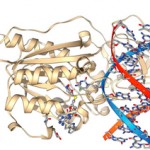
Vector Goddess/shutterstock.com
Investigators at Brigham and Women’s Hospital recently discovered a novel subset of peripheral helper T cells (TPH) that drive rheumatoid arthritis (RA) inflammation. Originally published in the February issue of Nature, findings from this study provided bedrock knowledge for developing new RA therapies.
Now, with funding from the Rheumatology Research Foundation, investigators are expanding on the information for further discovery. Deepak Rao, MD, PhD, an instructor at Brigham and Women’s Hospital and first author of the study, is the recipient of a Foundation Tobé and Stephen E. Malawista, MD, Endowment in Academic Rheumatology. This endowment enabled Dr. Rao and his team to continue analysis on the effects and mechanisms behind TPH cells.
Dr. Rao aims to apply the insights gained from the previous study to develop new therapy options for RA. “We are working in the lab now to target these exact cells. The new treatment would more specifically target the cells that directly impact RA and leave the other cells alone, so they are still around to fight infections.”
In addition to expanded treatment options, further investigation could provide indicators for how a patient will respond to a particular therapy. The newly discovered TPH cells were found in abundance in the blood of RA patients, but began to decline when patients began an effective treatment. TPH cells could track disease activity and help to eliminate lengthy trial-and-error periods for RA patients.
Of the study’s 28 co-authors, more than half have received Foundation funding at some point in their career. Dr. Rao and senior author Michael Brenner, MD, are currently receiving Foundation funding to expand the study on Tph cells. They will specifically seek to understand the development of the cells and identify factors that could develop new RA therapies.
“We are grateful that the Foundation is supporting our efforts to continue studying this interesting T cell population,” says Dr. Rao. “For junior investigators like myself, Foundation funding is essential.”
For more information, visit Rheumatology Research Foundation.


